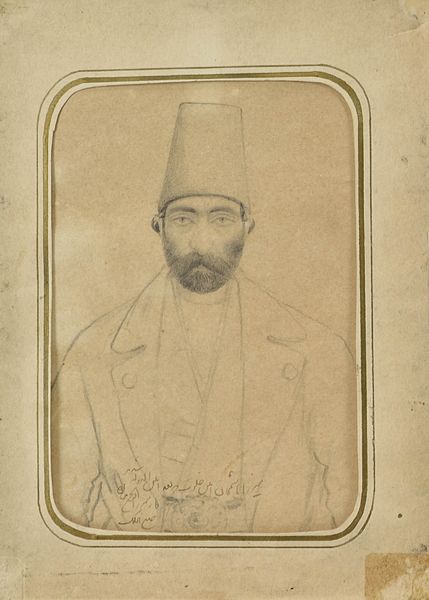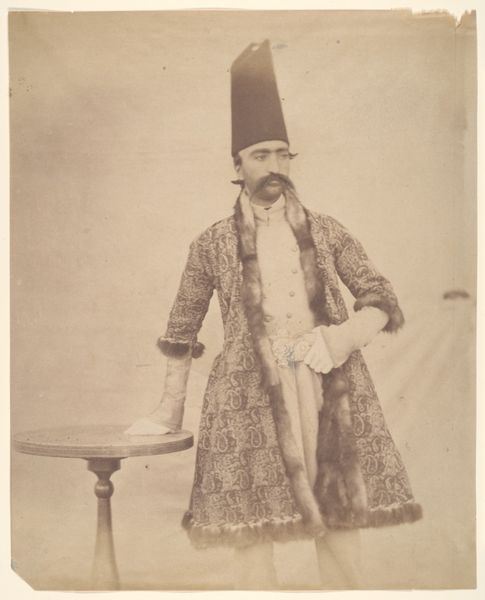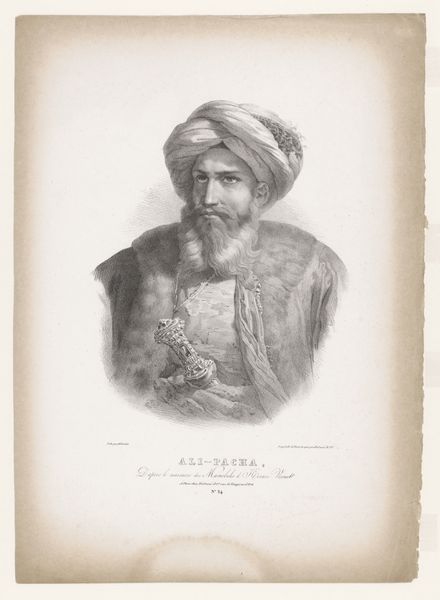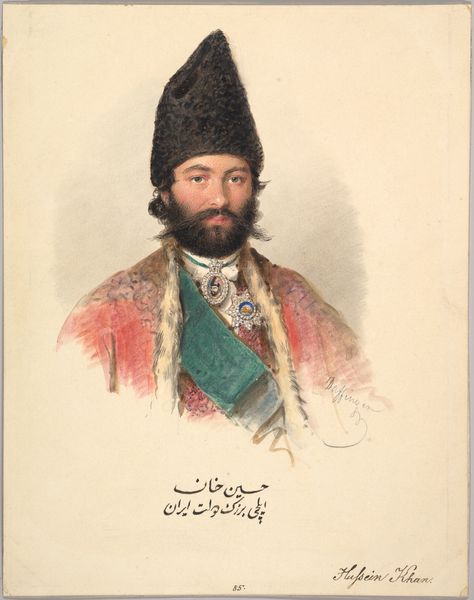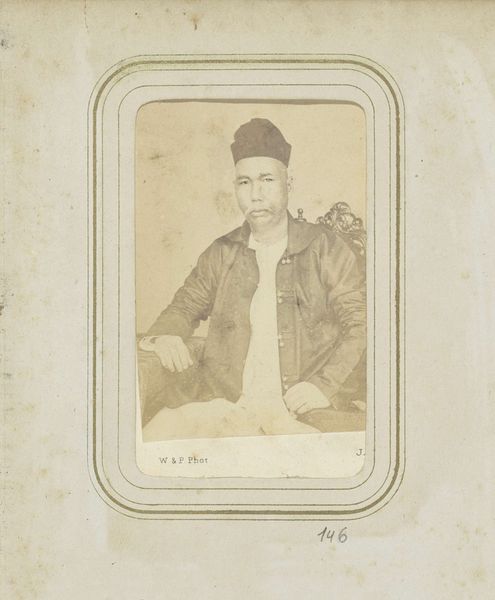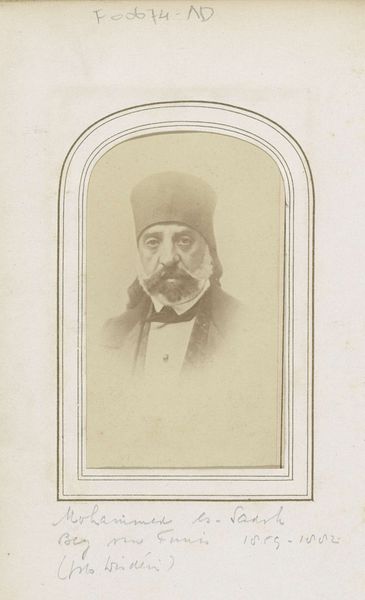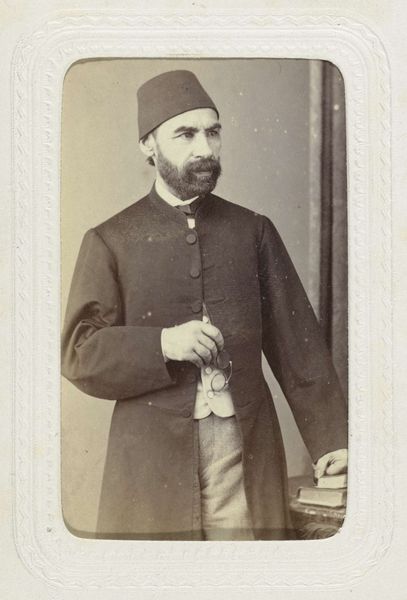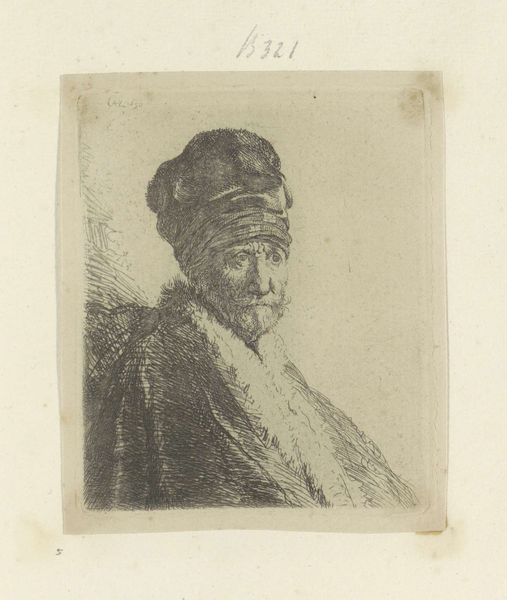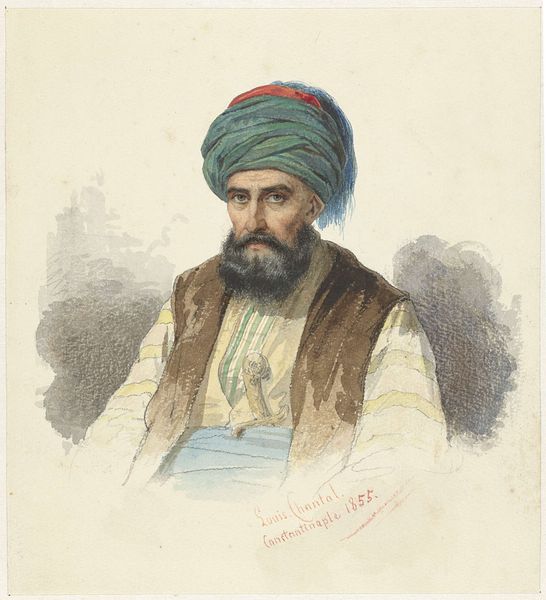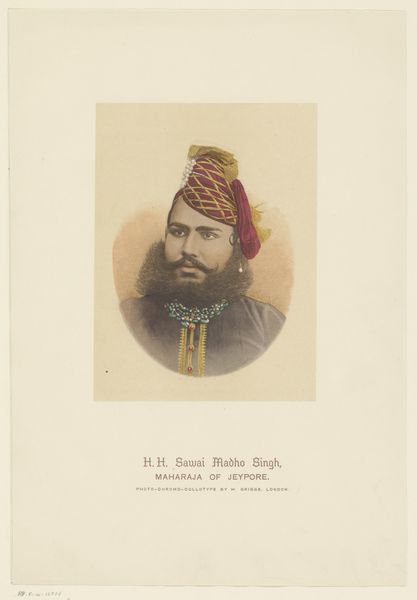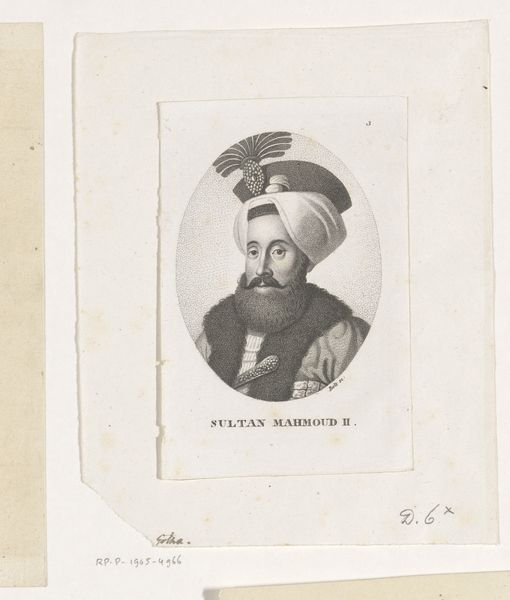
Portrait of Farrukh Khan Amin al-Dawla Kashi 1825 - 1875
0:00
0:00
drawing, paper, ink, pencil
#
portrait
#
drawing
#
paper
#
ink
#
pencil
#
islamic-art
#
academic-art
Dimensions: H. 6 in. (15.2 cm) W. 4 in. (10.2 cm)
Copyright: Public Domain
Curator: Here we have "Portrait of Farrukh Khan Amin al-Dawla Kashi," created sometime between 1825 and 1875 by Abu'l Hasan Ghaffari, also known as Sani' al-Mulk. It’s an ink and pencil drawing on paper. What strikes you first about it? Editor: The directness of his gaze. There's a quiet power, despite the sketch-like quality. It feels unfinished, raw almost. It speaks to the authority and strength projected in this representation, and the iconic image is emphasized through the central framing. Curator: Indeed. Ghaffari was a master of line and capturing likeness. Notice the meticulous detail in the beard and eyes, contrasting with the looser treatment of the clothing. The symbols of power, though lightly sketched, are unmistakable. The man's gaze confronts the viewer, inviting a conversation about the weight he carries. Editor: Absolutely. We see in this academic style a conscious assertion of power, reminiscent of classic European portraiture, adapted to the subject’s cultural context and identity as well as that of the patron. What I find most telling is the date range; during the period in which this image was crafted, European Imperial power was ascendant and spreading ever wider over the lands that comprised the Islamic world. It speaks volumes about the depicted subject’s ability to project power at the hinge of such forces. Curator: You are so right. And there's a distinct symbolic presence in this depiction. Consider the high hat. It doesn't merely indicate status; it symbolizes leadership, almost a sacred elevation. The academic art influence only served to enhance pre-existing visual semiotics, imbuing the piece with complex, powerful historical and cultural references that build into an emotional resonance. Editor: Which then prompts us to reflect on our role as viewers, doesn’t it? We see a leader carefully depicted at a critical moment in time. The rawness we felt on seeing it is also the rawness of that precise and conflicted turning point. The iconic symbols speak to a universal message, of how one wishes to be seen in relation to both cultural heritage and an uncertain future. Curator: I agree entirely. These portraits preserve more than likenesses; they sustain the resonance of historical moments. Editor: It’s a subtle but impactful reminder to analyze how power presents itself through artistic representation.
Comments
No comments
Be the first to comment and join the conversation on the ultimate creative platform.
